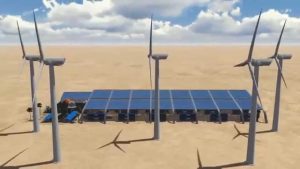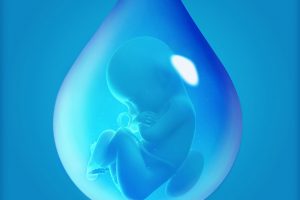Water Purification Systems

There are Atmospheric Water Generators (AWG) designed to extract water from humid air, and render it potable. AWGs are useful where pure drinking water is difficult, or impossible, to get. This is feasible because there is almost always a small amount of water in the air, that can be extracted and used.
The extraction of atmospheric water may not be free of cost, some input of energy is required to drive part of the process. That being said, some traditional AWG methods are completely passive, relying on natural temperature differences, and requiring no external energy source. (1)
Some of these AWGs are truly innovative, and may need as little as one filter change every five years. They also serve as dehumidifiers, which can make rooms and open spaces more comfortable. Some of these serve as air purifiers as well. They even have a system to keep the collected water oxygenated, and prevent algae growth. They simply use carbon filters and UV filters. Some small house units produce 10 to 20 gallons per day. No chlorine, no chloride, no toxins.
There are much larger projects currently in construction. There is the EcoloBlue Water Station, which is meant to generate 400,000 liter of potable water every day from the humidity in the air. The EcoloBlue station would roughly occupy 100 cubic meters, and have a combination of atmospheric water generators, solar panels, wind turbines, and tress.
The EcoloBlue can generate water in an environment, with as little as 25% humidity, and a temperature higher than 5° C. The total energy produced by solar and wind energy is collected in a battery underground, and used to run the entire station. Water taken from the atmosphere is collected in tanks of stainless steel, and pumped towards the filtration center, where it goes through an ozone system, a large reverse osmosis system, and re-mineralization process, to produce the best drinking water available. From there the water can be pumped for use.
The EcoloBlue station could become the safest and most environmentally friendly water production system. The station will include a supervision room and living quarters for four qualified technicians to run the operation. The water produced can be placed on trucks, piped to cities or bottled. Of course, pipes would be the greenest option. (2)
Previous Section:
Acknowledgments
Next Section:
Acknowledgments
Thank you for reading!
Please donate to help us publish this book.
PayPal: trevesbruno@gmail.com
Venmo: @Bruno-Treves
Sources:
(1) https://en.wikipedia.org/wiki/Atmospheric_water_generato
(2) http://www.ecoloblueblog.com/2014/08/10/ecoloblue-400000-literday-atmospheric-water-generation-plant/


